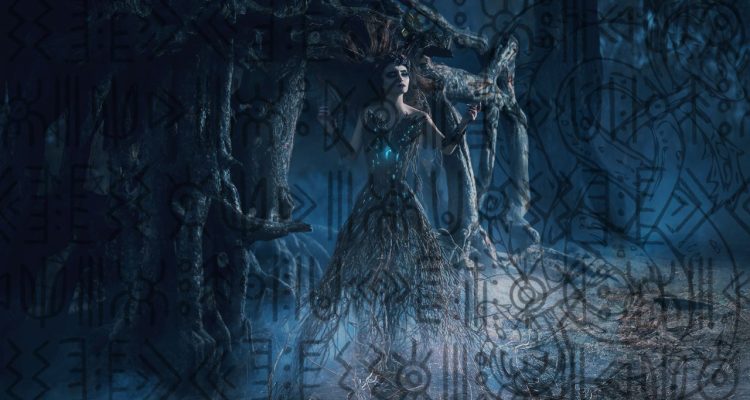Mark Twain, born Samuel Langhorne Clemens, is a name that carries immense weight in American literature. Born and raised in Missouri, Twain’s home environment would foster inspiration for his two most critically acclaimed novels, The Adventures of Tom Sawyer and its sequel Adventures of Huckleberry Finn, the latter of which would be fondly remembered as one of the Great American Novels.
Yet, more often than not, casual readers and fans alike might miss the opportunity to delve further into Twain’s plethora of published works and discover more beyond Sawyer and Finn’s adventures. The likelihood of those picking up Huckleberry Finn as a required reading material for school and not experiencing more of Twain’s oeuvre is simply too high to ignore.
As Bookstr commemorates the 113th year of Mark Twain’s passing on April 21st, 1910, we wish to offer readers the chance to ascertain five novels from the legendary author of American Realism and humorous satire that may have been eclipsed by the towering presence of Tom Sawyer and Huckleberry Finn.
1. A Connecticut Yankee in King Arthur’s Court

Time travel as a concept steeped in fiction is one that we are all well aware of. Yet, it was considered a fairly new genre by the late 19th century. Mark Twain’s A Connecticut Yankee in King Arthur’s Court is but one such example of the earliest novels that sought to expand upon this idea. The book’s protagonist, Hank Morgan, is an engineer hailing from Connecticut, who upon receiving a strong blow to the head, wakes up having been transported back in time to medieval England under the rule of King Arthur.
Following some initial confusion as to his predicament, Hank quickly realizes that he has somehow been sent to the past and endeavors to use his skills as an engineer to his advantage, choosing to present himself as an accomplished magician. After observing the livelihood of the medieval populace, Hank realizes that his desire lies in improving their lives in any way he can by utilizing his knowledge from the future.
Will Hank bring about miraculous change in an era very much alien to his own? Can he ever find a way to return to his own time? Mark Twain’s satirical twist on the concepts of chivalry and feudalism is sure to command his reader’s undivided attention in this early entry into the time-traveling genre.
2. Pudd’nhead Wilson

Pudd’nhead Wilson introduces the audience to a young lawyer by the name of David Wilson, who has recently moved into a small town along the banks of the Mississippi River. However, a clever joke by David manages to fall on deaf ears and is misunderstood, leading to the locals branding him as a nitwit, earning David the nickname “Pudd’nhead.”
Mark Twain then shifts focus to Roxy, a young slave woman, and her infant son, along with the family she is in servitude for. Despite Roxy being majority white and only one-sixteenth black, she is still associated with the other black slaves along with her son, Valet de Chambre, who is 1⁄32 black and is described as practically indistinguishable from Roxy’s master’s own infant son, Tom Driscoll. When an incident between fellow slaves involving thievery is revealed, Roxy fears for Chambre’s safety and at a moment’s notice, switches him with Tom Driscoll in the hopes that her son is raised in an upper-class environment with prosperous future aspects.
With the identities of the two boys switched and the trajectory of their lives forever altered, what fate would befall the two of them as they both come under the false notion of who they really are? Mark Twain provides the answers in this thrilling tale replete with mystery, murder, and revelations.
3. The Prince and the Pauper

Published in 1881, The Prince and the Pauper was Mark Twain’s first deep dive into the historical fiction genre and is generally not far behind Sawyer and Finn with regards to its immense popularity. Echoing similar themes of the previous story, this novel takes place in 16th-century England and features two physically identical boys who were born on the same day. One hails from the royal family as Edward VI of England, son of Henry VIII. The other, Tom Canty, is a pauper who lives with his alcoholic father in relatively poor conditions.
When the two boys happen to meet under unexpected circumstances, they are fascinated with their shared likeness. The pair agree to temporarily swap clothes and assume each other’s identity in order to experience life on opposite ends of the class hierarchy. As Tom struggles to adjust to the royal treatment following his successful infiltration into the palace, Edward is horrified by his firsthand experience of seeing the class inequality that ran rampant throughout the kingdom.
Will the two boys extract valuable insight from their experiences? If so, how will it affect their relationship and worldview? Twain’s beloved novel takes its readers on an adventure laced with themes of inequality and mercy while retaining his trademark satirical take on the monarchy and its customs.
4. A Double Barrelled Detective Story

When we think of the most significant achievements in the mystery genre, one name, in particular, tends to stand out. Arthur Conan Doyle’s Sherlock Holmes has established itself as the most well-known and beloved detective series perhaps ever published. With Holmes’ proven track record of meticulous thought processes and logical approaches leading to successful resolutions to the mysteries laid out before him, one would certainly believe that the man’s masterful skills are formidable. Yet, in the short story A Double Barrelled Detective Story, Mark Twain seeks to upset this preconception of logic over all else by re-imagining the fictional detective.
Sherlock Holmes finds himself thrust into the heart of the American West, far from home, on a visit with his nephew. When a silver miner is killed in a cabin explosion inside a mining camp in California, Holmes jumps on the case with his usual bravado of intellectual proficiency. However, after arriving at a seemingly logical conclusion as per the scientific method, Holmes is flabbergasted to discover that his supposed explanations were entirely wrong. For all of his careful assessments, the crime was solved by little else than with factors not bound to science or logic.
Does this sound out of character for Holmes? To have his usual methodology be rendered completely useless would seem preposterous for someone like the famed detective had this short story been written by Doyle. Mark Twain’s twist on the mystery genre pokes fun at the idea of logic triumphing over all and introduces the aspect of chaotic forces that interfere with systematic approaches to solving problems.
5. Captain Stormfield’s Visit to Heaven

Captain Stormfield’s Visit to Heaven would be Mark Twain’s final short story published during his lifetime. The last product of his penmanship was the culmination of four decades of work and was largely inspired by the tales of Twain’s personal friend, seaman Captain Ned Wakeman. The protagonist was modeled after Wakeman as Captain Elias Stormfield, a man who had embarked on a cosmic expedition, albeit unintentionally due to being sent off-course while racing a comet. Along the way, the audience learns of Stormfield’s obsession with finding Heaven across his travels along with his preconceived misconceptions of what heavenly paradise might truly entail.
Stormfield eventually finds his way into “heaven” and is appalled to witness the bizarre amalgamation of concepts, celebrity figureheads, and illusions posing as conventional images of religious ideas such as angels. Throughout the short novella, Twain presents his usual satirical take on religious fundamentalism through the use of irreverent humor and mockery.
The legacy of Mark Twain has stood the test of time. Over a century after his passing, his collections of published works continue to be read with reverence and awe. From humble beginnings in journalism to attaining status as the father of America’s literature, Twain’s books are a marvel to behold.
Interested to learn more about Mark Twain? Be sure to check out Bookstr’s selection of related content here.
















